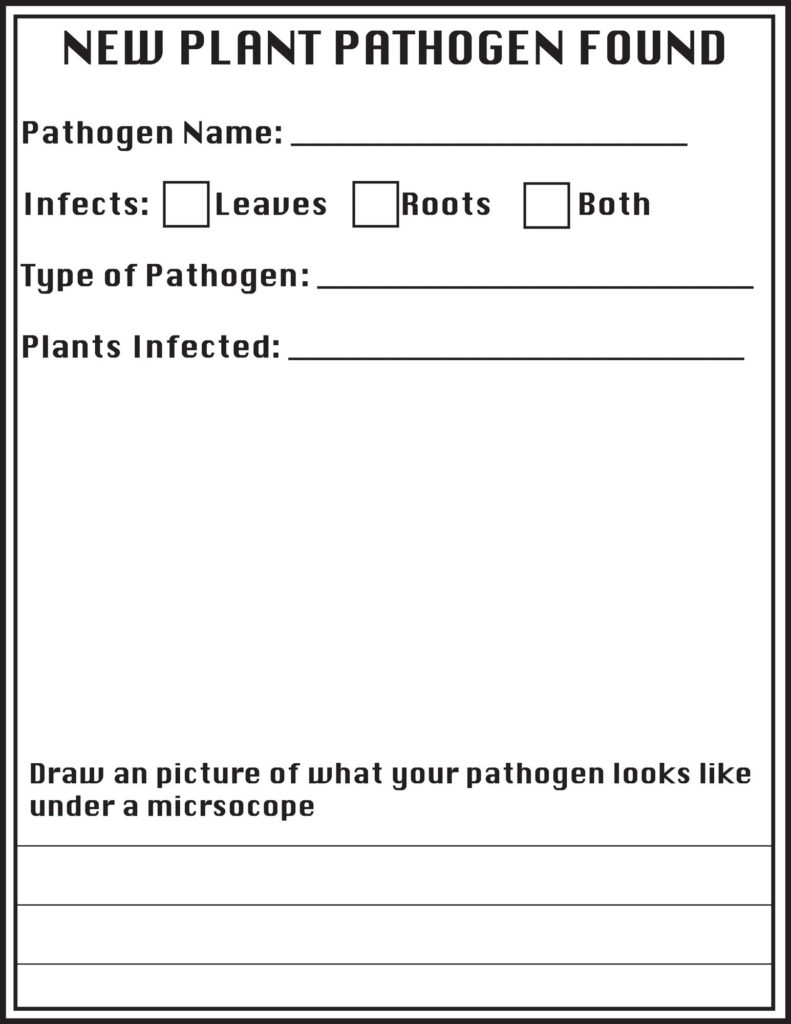Introduction
Just like you and me, plants can get sick too when they become infected with a pathogen. Out in nature, there are a variety of different bacteria, fungi, viruses, and nematodes that infect plants. Some of these pathogens live deep within the soil and infect the roots while others infect the leaves and above ground parts of the plants. Plant pathologists are always discovering new pathogens and varieties of existing pathogens that have evolved over time.

Meet Allie and learn about the immune system of plants and how research at IU is helping crop plants stay healthy without pesticides.
Create Your Own Plant Pathogen

Materials Checklist
- Colored Pencils or other art medium
- Printed Flyer Template (optional)
Instructions
Use what you learn from the Innes lab video called “Plants Get Sick Too,” to get creative and design your own plant pathogen. Make a flyer with a description of your pathogen including illustrations of what it would look like under a microscope.
Imagine that you are a plant pathologist who has been given the mission to search for new pathogens that infect valuable plants out in nature. After gathering your tools to accomplish this task you head outside to begin your search. It doesn’t take long before you see plants that don’t look as healthy as the others. After taking samples, you head back to your laboratory to take a closer look at the pathogen that made these plants sick. The pathogen you found is something you have never seen before. You then realize that you have discovered a new pathogen and are eager to share your finding with other plant pathologists and farmers in your area to let them know that there is a new pathogen causing disease.
Make a flyer that you will take with you to share your finding.
- Give your pathogen a name
- Identify which part of the plant your pathogen infects
- Identify what type of pathogen it is (Bacteria, Nematode, Fungus, Oomycete, Virus, Aphid/Insect).
- What types of plants does your pathogen infect? (ie. Some pathogens have specific host plants while others can infect MANY different types of plants)
- Draw a picture of what your pathogen would look like if you looked at it under a microscope. Be creative!
- Include any other important information you would want to share with farmers, other scientists, and the public.
In the Innes lab, we love talking about plant pathogens and would love to see your creations. If you would like to share, email us at amargets@iu.edu!


